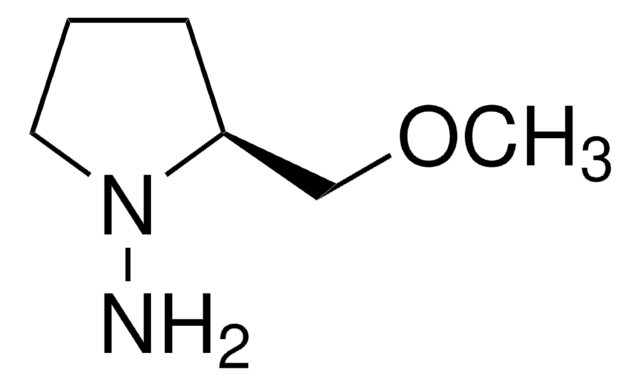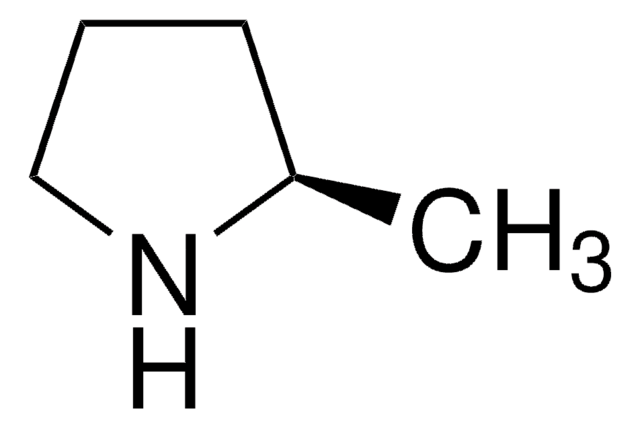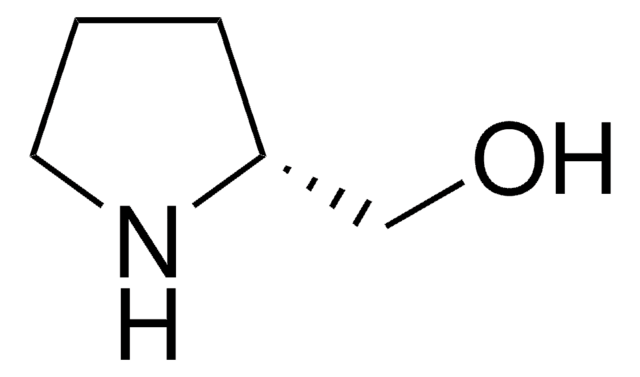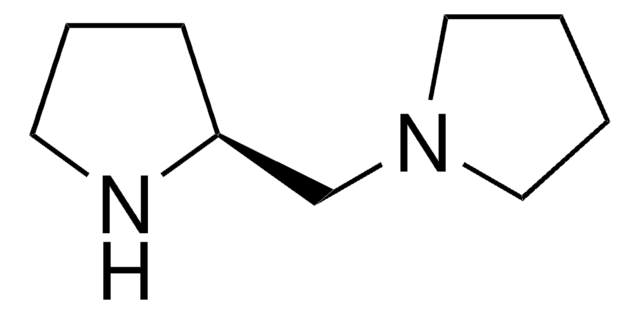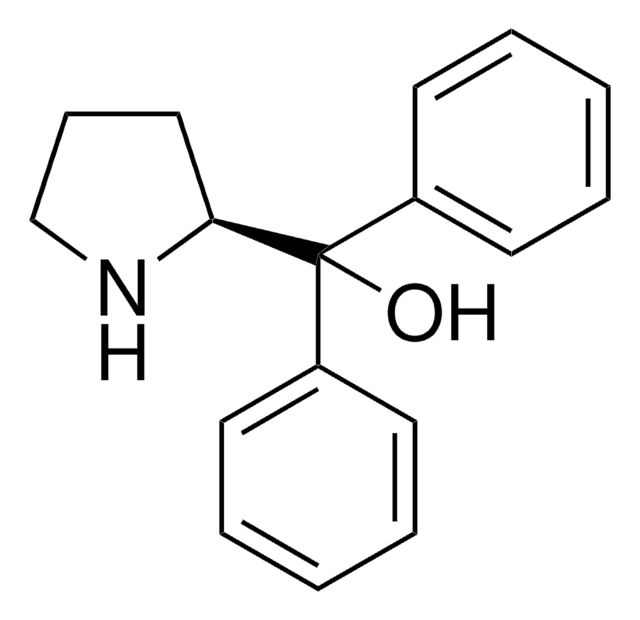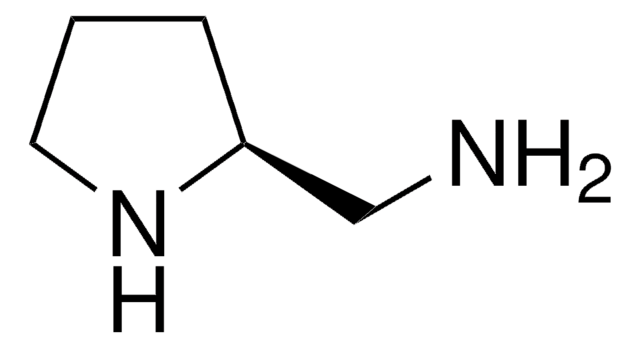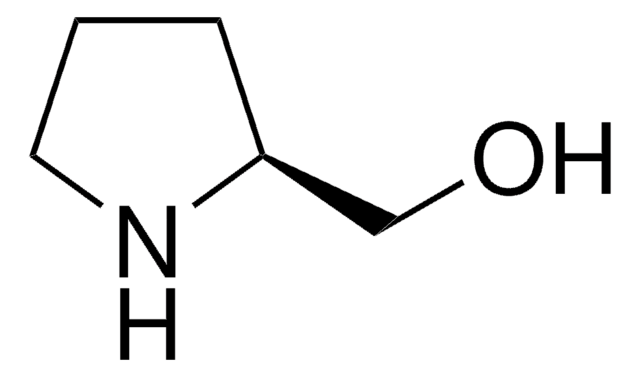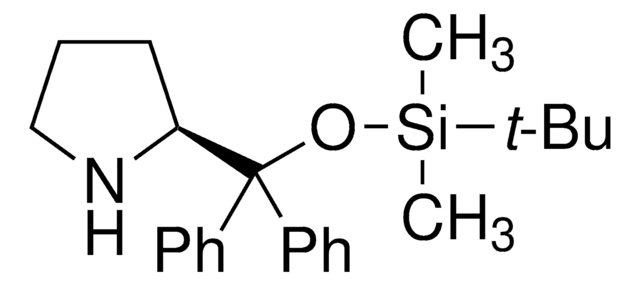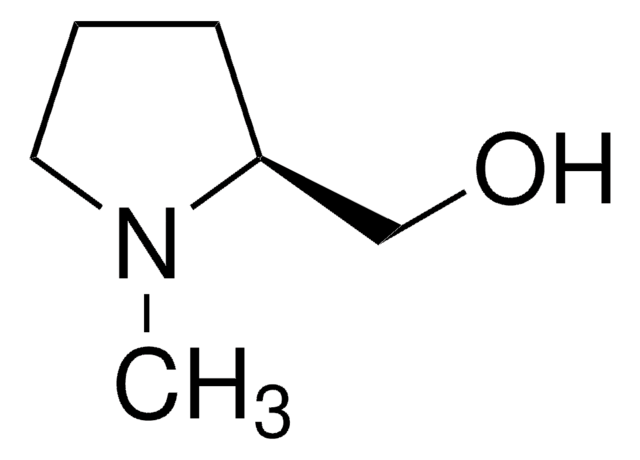277053
(S)-(+)-2-(Methoxymethyl)pyrrolidine
99%
Synonym(s):
O-Methyl-L-prolinol, SMP
Sign Into View Organizational & Contract Pricing
All Photos(2)
About This Item
Empirical Formula (Hill Notation):
C6H13NO
CAS Number:
Molecular Weight:
115.17
Beilstein:
3587324
MDL number:
UNSPSC Code:
12352005
PubChem Substance ID:
NACRES:
NA.22
Recommended Products
Assay
99%
form
liquid
optical activity
[α]20/D +2.4°, c = 2 in benzene
refractive index
n20/D 1.4457 (lit.)
bp
62 °C/40 mmHg (lit.)
density
0.933 g/mL at 25 °C (lit.)
functional group
ether
SMILES string
COC[C@@H]1CCCN1
InChI
1S/C6H13NO/c1-8-5-6-3-2-4-7-6/h6-7H,2-5H2,1H3/t6-/m0/s1
InChI key
CHPRFKYDQRKRRK-LURJTMIESA-N
Application
(S)-(+)-2-(Methoxymethyl)pyrrolidine may be used to prepare planar chiral 2-phospha[3]ferrocenophanes. It may also be used as an organocatalyst in the cross-aldol reaction of dihydroxyacetone with p-nitrobenzaldehyde to form the corresponding polyol. SMP reacts with benzoylformic acid to form (S)-N-benzoylformyl-2-(methoxymethyl)-pyrrolidine.
Chiral auxiliary for asymmetric synthesis of propargyl alcohols and 4-nitrocyclohexanones, and for asymmetric Michael additions to enones.
Signal Word
Warning
Hazard Statements
Precautionary Statements
Hazard Classifications
Eye Irrit. 2 - Flam. Liq. 3 - Skin Irrit. 2 - STOT SE 3
Target Organs
Respiratory system
Storage Class Code
3 - Flammable liquids
WGK
WGK 3
Flash Point(F)
113.0 °F - closed cup
Flash Point(C)
45 °C - closed cup
Personal Protective Equipment
dust mask type N95 (US), Eyeshields, Gloves
Regulatory Information
新产品
Choose from one of the most recent versions:
Already Own This Product?
Find documentation for the products that you have recently purchased in the Document Library.
Kirsten E Bell et al.
PloS one, 12(7), e0181387-e0181387 (2017-07-19)
Protein and other compounds can exert anabolic effects on skeletal muscle, particularly in conjunction with exercise. The objective of this study was to evaluate the efficacy of twice daily consumption of a protein-based, multi-ingredient nutritional supplement to increase strength and
D Kawauchi et al.
Oncogene, 36(37), 5231-5242 (2017-05-16)
Group3 medulloblastoma (MB
Synthesis, 1242-1242 (1992)
Stereocontrolled Addition Reaction of Organometallics to Chiral a-Keto Amides.
Fujisawa T, et al.
Bulletin of the Chemical Society of Japan, 63(7), 1894-1897 (1990)
Jingyu Wang et al.
Polymers, 11(4) (2019-04-10)
Conventional endovascular embolization of intracranial (or brain) aneurysms using helical detachable platinum coils can be time-consuming and occasionally requires retreatment due to incomplete coil packing. These shortcomings create a need for new biomedical devices and methods of achieving brain aneurysm
Our team of scientists has experience in all areas of research including Life Science, Material Science, Chemical Synthesis, Chromatography, Analytical and many others.
Contact Technical Service